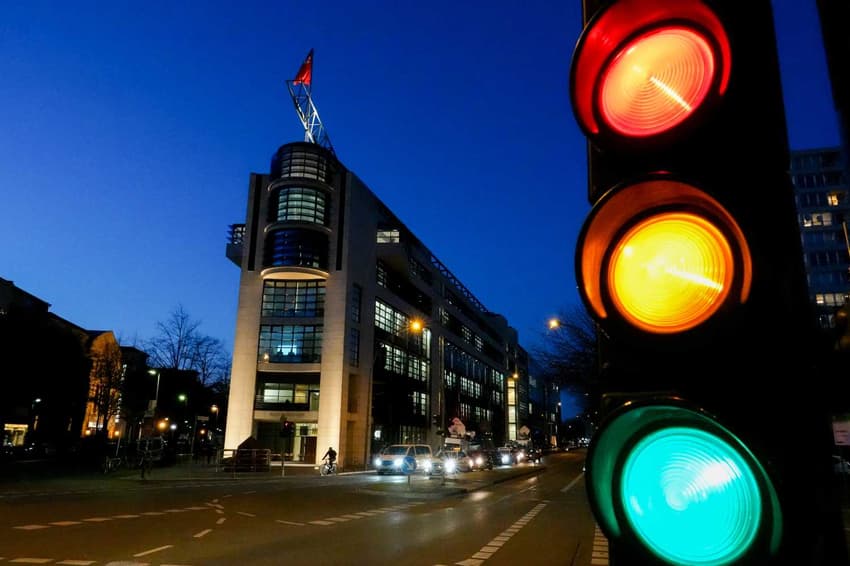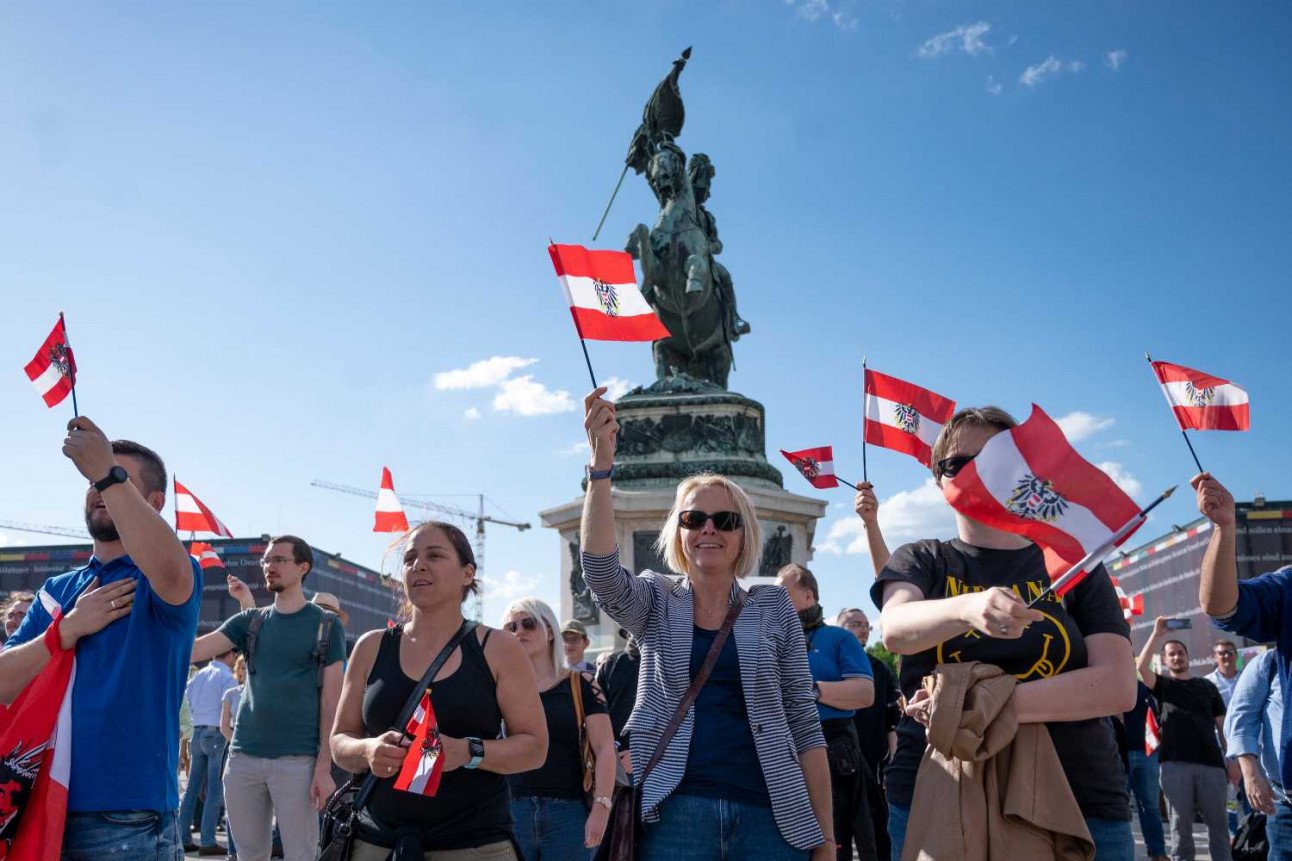EXPLAINED: How does Austria's coronavirus traffic light system work?

Austria’s coronavirus traffic light system has been developed to manage risks and prevent a second nationwide lockdown. Here’s everything you need to know.
In June, Austria announced it would implement a five-colour traffic light system to help minimise the risk of a second wave and another nationwide lockdown.
The traffic light system was launched in August with four lights, but has been changed to five to reflect the vaccination and testing improvements in Austria, which make it possible to achieve 'very low risk' status.
An updated map which shows the level of every single region in Austria can be found here.
Here’s what you need to know.
What is Austria’s coronavirus traffic light system?
Put in place in the middle of September, the traffic lights are updated once every seven days.
MAPS: Where are Austria's emerging coronavirus hotspots?
The five colours indicate levels of risk and will be implemented at a district level.
The levels are: green (very low risk), yellow green (low risk), yellow (medium risk), orange (high risk) and red (acute).
A region will be ‘green’ where there is very low risk, defined as up to five new infections per 100,000 inhabitants.
A region will be 'yellow green' where there is low risk due to individual cases and heavily isolated clusters.
A region will be ‘yellow’ where there are individual cases but the clusters are less isolated.
A region will be deemed ‘orange’ where there has been an accumulation of cases and clusters are no longer traceable.
Finally, a region will be deemed ‘red’ - i.e. high risk - where the outbreaks are uncontrolled and the virus is widespread.

Austria's traffic light system has won plaudits internationally, but has also been subject to criticism. Image: AFP
How are decisions made?
An expert committee, with input from Austria’s Coronavirus Commission, the Health Department and the Chancellery will decide whether a region needs to be made a particular colour.
The committee takes into account a wide range of factors in making the decisions.
In addition to considering local infection rates over seven days, the traffic light level will hinge on hospital occupancy, traceability of infection chains and the test positivity rate in the region.
Tourist numbers - as well as cross-border commuters and returning travellers - are also taken into account.
What does each colour mean?
This has been one of the most controversial aspects of the scheme, DPA reports.
This is primarily because no set metrics have been developed - and each Austrian state or region has not committed to uniform metrics.
In September, some of Austria’s western states put in place a curfew despite a low warning level, whereas the darker coloured Vienna refused to do so.
The Ministry of Health and the Chancellery said on Monday that the measures should be “targeted and regional”, which can be confusing.
However, Health Minister Rudolf Anschober said that four main areas would be impacted should a region be deemed red: schools, bars, private parties and nursing homes, OE24 reported on Wednesday.
If a district turns red, then high school students would undertake ‘e-learning’ i.e. home schooling.
Bars would be given an earlier curfew, although this would depend on the region and the seriousness of the situation.
The 10pm curfew in place in Vorarlberg, Tyrol and Salzburg could be adopted, or a far stricter curfew of 5pm - which is currently in place in Kuchl - could be implemented.
The curfew applies only to bars and not to restaurants.
The current ten-person limit for private parties would be reduced to five.
Finally, nursing home visits would be completely banned.
Is it the same as the EU’s traffic light system?
No. The European Union unveiled a voluntary traffic light system to help facilitate European coordination on the virus.
The EU’s system - which makes determinations according to stringent numerical guidelines rather than at the decision of a committee - has been criticised by Austria.
Austria's EU minister, Karoline Edtstadler, said the system is inaccurate and ineffective because “most regions in Europe are already red”.
"We have to be able to assess the risk better and also maintain freedom of movement and goods at the same time," she added.
Comments
See Also
In June, Austria announced it would implement a five-colour traffic light system to help minimise the risk of a second wave and another nationwide lockdown.
The traffic light system was launched in August with four lights, but has been changed to five to reflect the vaccination and testing improvements in Austria, which make it possible to achieve 'very low risk' status.
An updated map which shows the level of every single region in Austria can be found here.
Here’s what you need to know.
What is Austria’s coronavirus traffic light system?
Put in place in the middle of September, the traffic lights are updated once every seven days.
MAPS: Where are Austria's emerging coronavirus hotspots?
The five colours indicate levels of risk and will be implemented at a district level.
The levels are: green (very low risk), yellow green (low risk), yellow (medium risk), orange (high risk) and red (acute).
A region will be ‘green’ where there is very low risk, defined as up to five new infections per 100,000 inhabitants.
A region will be 'yellow green' where there is low risk due to individual cases and heavily isolated clusters.
A region will be ‘yellow’ where there are individual cases but the clusters are less isolated.
A region will be deemed ‘orange’ where there has been an accumulation of cases and clusters are no longer traceable.
Finally, a region will be deemed ‘red’ - i.e. high risk - where the outbreaks are uncontrolled and the virus is widespread.

Austria's traffic light system has won plaudits internationally, but has also been subject to criticism. Image: AFP
How are decisions made?
An expert committee, with input from Austria’s Coronavirus Commission, the Health Department and the Chancellery will decide whether a region needs to be made a particular colour.
The committee takes into account a wide range of factors in making the decisions.
In addition to considering local infection rates over seven days, the traffic light level will hinge on hospital occupancy, traceability of infection chains and the test positivity rate in the region.
Tourist numbers - as well as cross-border commuters and returning travellers - are also taken into account.
What does each colour mean?
This has been one of the most controversial aspects of the scheme, DPA reports.
This is primarily because no set metrics have been developed - and each Austrian state or region has not committed to uniform metrics.
In September, some of Austria’s western states put in place a curfew despite a low warning level, whereas the darker coloured Vienna refused to do so.
The Ministry of Health and the Chancellery said on Monday that the measures should be “targeted and regional”, which can be confusing.
However, Health Minister Rudolf Anschober said that four main areas would be impacted should a region be deemed red: schools, bars, private parties and nursing homes, OE24 reported on Wednesday.
If a district turns red, then high school students would undertake ‘e-learning’ i.e. home schooling.
Bars would be given an earlier curfew, although this would depend on the region and the seriousness of the situation.
The 10pm curfew in place in Vorarlberg, Tyrol and Salzburg could be adopted, or a far stricter curfew of 5pm - which is currently in place in Kuchl - could be implemented.
The curfew applies only to bars and not to restaurants.
The current ten-person limit for private parties would be reduced to five.
Finally, nursing home visits would be completely banned.
Is it the same as the EU’s traffic light system?
No. The European Union unveiled a voluntary traffic light system to help facilitate European coordination on the virus.
The EU’s system - which makes determinations according to stringent numerical guidelines rather than at the decision of a committee - has been criticised by Austria.
Austria's EU minister, Karoline Edtstadler, said the system is inaccurate and ineffective because “most regions in Europe are already red”.
"We have to be able to assess the risk better and also maintain freedom of movement and goods at the same time," she added.
Join the conversation in our comments section below. Share your own views and experience and if you have a question or suggestion for our journalists then email us at [email protected].
Please keep comments civil, constructive and on topic – and make sure to read our terms of use before getting involved.
Please log in here to leave a comment.